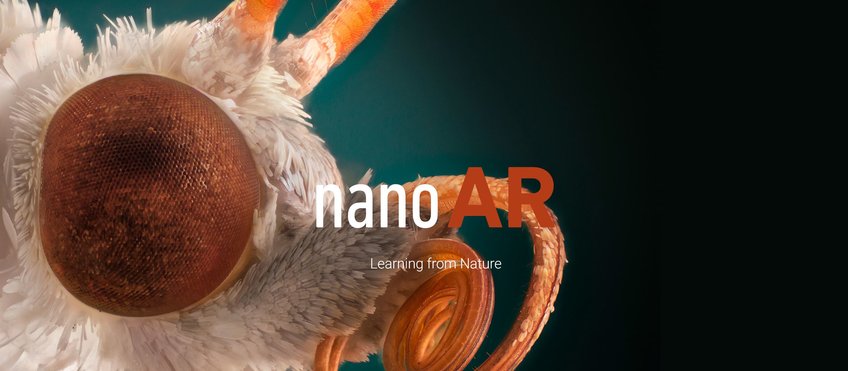
Technical Applications of Biomimetic Nanostructures - nanoAR
Klaus Weishaupt, Project Leader
Optical elements are an important part of many modern-day technical appliances: starting from miniature cameras in mobile phones, to endoscopic medical devices and high performance sensors in industrial applications and robotics. However, regardless of the application, a major problem of all these optical elements is the reflection of light. These reflections can cause a loss in image brightness, create double images, and – in cases of high laser powers – might even inflict damage to the equipment.
So far, ‘classic’ anti-reflective coatings found on most lenses and surfaces rely on the deposition of a thin layer of a different material. Usually these surface coatings are restricted to specific wavelengths of light and also have a limited durability. Some insects have solved the problem of light reflectivity millions of years ago. The surface of moth eyes for example is densely covered with nano-sized pillars, resulting in almost perfect anti-reflective properties.
Recently, researchers at the Max Planck Institute for Intelligent Systems have developed a novel coating method that mimics this nanometer-scaled structure. To date, conventional mass-production of such structures was complex and expensive. In contrast, our nano.AR method has the potential to be more easily extended to produce larger, commercially more interesting volumes. Our workgroup thus investigates the possibilities to extend the application of the nano.Ar technology into various optical and technological fields.
Funded by the BMBF within the NeoMAT-Projekt and the Wirtschaftsministerium Baden-Württemberg